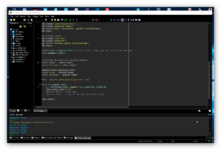levnu
Full Member level 2
Hi,
i would like to create a .hex file or .bin file that will include sine 5MHz wave sample with 320Msps, and i would inject it into FPGA Tx Serdes,
i guess it means 320M samples per second,
does it mean that i need to take a 5MHz signal and sample it each (1/320M) second? for e.g. qty of 5000 samples in a file, how can i do it?
is there a simple generator for this ?
Thanks,
i would like to create a .hex file or .bin file that will include sine 5MHz wave sample with 320Msps, and i would inject it into FPGA Tx Serdes,
i guess it means 320M samples per second,
does it mean that i need to take a 5MHz signal and sample it each (1/320M) second? for e.g. qty of 5000 samples in a file, how can i do it?
is there a simple generator for this ?
Thanks,
